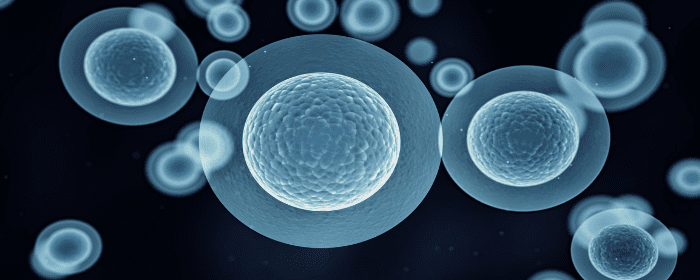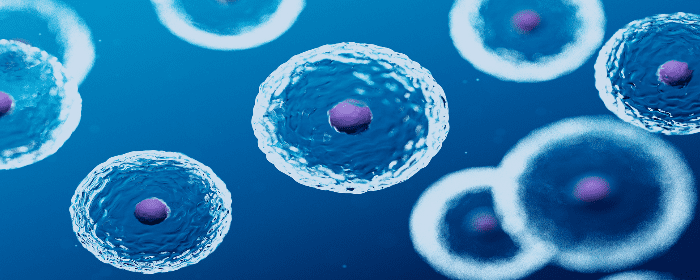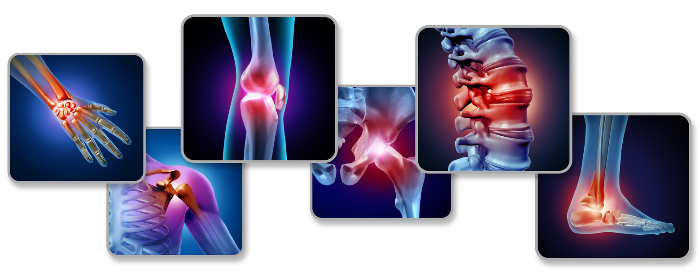
by admin | Oct 1, 2021 | Stem Cell Therapy, Osteoarthritis, PRP, Stem Cell Research
With nearly 30 million people in the US affected by osteoarthritis (OA), the condition continues to be among the leading causes of chronic pain and disability. Considering that advances in medical technology have increased overall life expectancy, the number of people living longer and dealing with the effects of OA is expected to increase for the foreseeable future.
Although modern medicine has improved the way most diseases and chronic conditions are diagnosed and treated, OA treatment has not benefited from these advances. As a result, treatment and prevention of OA continue to focus primarily on controlling and minimizing symptoms associated with the condition, not treating or preventing the condition itself. Unfortunately, for many, when symptoms of OA progress to a point where the pain is no longer able to be managed, their options look to surgical replacement of the affected joint.
While there are many contributing factors related to the onset and progression of OA, including obesity, history of trauma, genetics, and heritable and acquired disorders, there also appears to be an association between the onset of OA and a depleted local population of mesenchymal stem cells (MSCs).
Considering the apparent relationship between OA and MSCs, Freitag et al. reviewed the reparative pathways, safety, and efficacy of MSC therapy in the treatment of osteoarthritis.
With their ease of harvest and ability to expand into chondrocytes, MSCs have continued to gain interest when exploring various stem cell therapies for the active management of pain and symptoms associated with OA.
Freitag et al. found that preclinical and clinical results of studies of cartilage repair techniques that utilize MSCs, including MSC scaffold transplantation techniques, MSC injectable techniques, MSC as a vehicle for platelet-rich plasma (PRP), and hyaluronic acid (HA) as an active carrier of MSCs, have all shown favorable results in supporting the benefits of MSC for the improvement of function and regeneration of new tissue in those afflicted with OA.
With over 400 active trials currently examining the efficacy of MSCs in the treatment of a variety of conditions, including OA, the safety of utilizing MSC therapy continues to draw interest from the medical community.
Although some early studies appeared to raise the question of abnormal cell growth, and ultimately the safety, associated with MSC therapy, the authors’ systematic review of clinical trials found that, while caution needs to be undertaken when culturing MSCs, the evidence demonstrates MSCs are generally safe for therapeutic use for the treatment of OA.
Freitag et al. conclude that the rapid progression of OA and related conditions demonstrate the need for therapies that repair and prevent these diseases, not just manage pain and related symptoms. As such, the authors feel MSC therapy offers a safe and viable option for the eventual treatment and prevention of OA and calls for further randomized controlled trials to evaluate the most effective applications of MSCs for managing osteoarthritis.
Source: (2016, May 26). Mesenchymal stem cell therapy in the treatment of osteoarthritis. Retrieved from https://bmcmusculoskeletdisord.biomedcentral.com/articles/10.1186/s12891-016-1085-9

by admin | Sep 9, 2021 | Health Awareness
Mesenchymal stem cells are critical in many types of innovative and healing therapies. Regenerative medicine, also known as stem cell therapy, can help manage condition symptoms and progression. Conditions can be an autoimmune disease or joint injuries.
Because of this, certain supplements may help support the health of mesenchymal stem cells in the body. Encouraging healthy stem cells can help potentially improve the outcomes of stem cell therapies for injuries and other conditions.
Useful Supplements
Many different supplements are likely to support the health of mesenchymal stem cells. More research is needed on the direct effect of these supplements on mesenchymal stem cells specifically.
Still, there is plenty of scientific research to support the idea that certain supplements boost tissue growth. This tissue growth includes the development of mesenchymal stem cells.
Chondroitin/Glucosamine: Typically, these supplements are used to treat the symptoms of arthritis. They are usually harvested using shellfish.
Glucosamine promotes the growth of cartilage, which entails the development of mesenchymal stem cells. Also, some laboratory trials have shown that these supplements can encourage the longevity of stem cells.
Turmeric: This spice is often used in Indian cuisine. It also has anti-inflammatory properties. In part, turmeric’s effectiveness is related to the presence of curcumin. This chemical compound decreases inflammation and supports general health.
Some research has suggested that patients with Alzheimer’s disease can see improvements by taking turmeric supplements. Curcumin is believed to support and protect mesenchymal stem cells, as well.
How Do Supplements Support Mesenchymal Stem Cell Growth?
Not all supplement brands are created equally. Be sure to read ingredient lists carefully before purchasing supplements.
Further research is needed to explore how and what supplements can potentially help mesenchymal stem cells, but there is no current information to show that these supplements could not help promote the growth of mesenchymal stem cells.

by admin | Sep 3, 2021 | Stem Cell Therapy, Mesenchymal Stem Cells, Stem Cell Research
Human mesenchymal stem cells (hMSCs) are multipotent adult stem cells found in tissue throughout the body, including in the umbilical cord, bone marrow, and adipose tissue. Capable of self-renewing and differentiating into multiple tissues including bone, cartilage, muscle, fat cells, and connective tissue[1], MSCs appear to have a wide range of potential for use as therapeutic purposes for many serious health problems occurring throughout the body.
In this review, Rodriguez-Fuentes et al. examined currently registered (as of July 2020) clinical trials involving mesenchymal stem cells with the goal of analyzing the different applications of MSCs in a clinical setting to demonstrate the growing and broad potential of their therapeutic application relative to the reconstruction of damaged tissue.
As of July 2020, the authors identified 1,138 registered clinical trials (CTs) worldwide using MSCs to investigate their therapeutic potential. Therapeutic applications are a relatively new area of study, evidenced by the fact that only 19 CT studies were started between 1995 and 2005 and over 900 were initiated in the last ten years (2011-present). The majority of these CTs focused on the fields of traumatology, neurology, cardiology, and immunology. Interestingly, of the 1,138 CTs identified in this query, only 18 had published outcomes.
Examining the global distribution of registered CTs, it was observed that CTs are located in 51 countries, with China (228) and the US (186) leading the research.
As part of this review, and in addition to examining the number and geographic locations of registered CTs, the sourcing, isolation and treatment methods, and storage conditions of MSCs used in each clinical trial.
Most of the MSCs used for these CTs were obtained from cells of the iliac crest, placenta, and adipose tissue. All recovered cells underwent steps of purification and expansion prior to use in patients. Additionally, all methods used in these CTs were also found to follow good manufacturing practices (GMP).
Upon completing their review of registered CTs, Rodriguez-Fuentes et al. also observed that medical specialties for the most published studies included (in descending order) cardiology, traumatology, pneumology, neurology, hematology, ophthalmology, and plastic surgery. The most frequent pathologies addressed in these published CT studies included knee osteoarthritis, ischemic heart disease, and dilated cardiomyopathy. While the number of MSCs used varied by study, most utilized around 100 million MSCs.
The authors concluded that most studies analyzed as part of this review demonstrate positive outcomes with no serious adverse effects. While China and the US lead the world in the number of registered MSC clinical trials, the authors point out the fact that many of these CTs have multiple locations in different countries – indicating the importance of, and willingness to, collaborate internationally on this research.
Although most of the conditions for which clinical utility of MSCs have been published are conditions that do not currently have specific treatments with desirable or effective outcomes, there appears to be significant and broad potential for the clinical use of hMSCs without serious adverse events.
While there are currently at least 1,138 registered MSC CTs, there is still much to be examined and understood about MSCs. As such the continually increasing number of CTs including MSCs will help identify and demonstrate the therapeutic potential of these versatile stem cells.
[1] “Mesenchymal stem cells – Latest research and news | Nature.” https://www.nature.com/subjects/mesenchymal-stem-cells.
Source: Mesenchymal Stem Cells Current Clinical Applications. From https://www.sciencedirect.com/science/article/pii/S018844092030638X

by admin | Jul 30, 2021 | Stem Cell Research, Multiple Sclerosis, Stem Cell Therapy
Typically understood to support hematopoiesis and to produce the cells of the mesodermal lineage, mesenchymal stem cells (MSCs) found in bone marrow, fat, and other tissues of the body, have recently been found to contain additional properties that include immunomodulator and neurotrophic effects.
Considering earlier studies that have demonstrated favorable effects of MSC treatments in a variety of conditions – including stroke, multiple sclerosis, multi-system atrophy, and amyotrophic lateral sclerosis, Petrou et al. performed this double-blind study as a way to evaluate the best way of administration and the safety and clinical efficacy of MSC transplantation – specifically in patients with active and progressive multiple sclerosis.
The response of the 48 patients with progressive multiple sclerosis and with displaying evidence of either clinical worsening or activity during the previous year in this study were evaluated after being treated intrathecally (IT) or intravenously (IV) with autologous MSCs or with sham injections. Having identified a critical and unmet need for treatment, the goal of Petrou et al.’s study was to examine the therapeutic efficacy of MSC transplantation in this specific population.
Over the course of this controlled clinical trial, participants were randomly assigned to three treatment groups and treated (either intrathecally or intravenously) with autologous MSCs or with sham injections. At the 6-month mark, the authors of this study retreated half of the patients in both the MSC-IT and MSC-IV groups with MSCs, while the remaining participants were treated with sham injections. The same process occurred with patients initially treated with sham injections; meaning that at the 6-month mark, half were either treated with MSC-IT or MSC-IV.
Prior to the start of this study, Petrou et al. established a number of primary and secondary endpoints. Predetermined primary endpoints of this study included: the safety of the MSC-IV and MSC-IT treatments and the difference among the three groups in relation to performance on the Expanded Disability Status Scale (EDSS) at 6- and 12-month intervals. Predetermined secondary endpoints included the difference between the sham-treated and MSC-IT or MSC-IV treated group in the number of relapses and the relapse rate, the number of MRI gadolinium-enhancing lesions, the annualized rate of change in the T2 lesion load on MRI, percent brain volume change, performance on a series of physical and cognitive functions, and the retinal nerve fiber layer thickness.
At the conclusion of this 14-month trial, the authors reported that the study demonstrated positive results in all predetermined primary endpoints. More specifically, throughout the course of this study, the authors discovered that significantly fewer patients experienced treatment failure in the MSC0IT and MSC-IV groups compared with those in the sham-treated group. Additionally, over the course of the following year, nearly 59% and 41% of patients treated with MSC-IT and MSC-IV exhibited no evidence of multiple sclerosis activity; this is compared with less than 10% of patients in the sham-treated group.
Significant improvements of those receiving MSC-IT treatment (compared to sham treatment) were also observed in the following: ambulation index, the sum of functional scores, 25-foot timed walk test, 9-hole peg tests, PASAT and OWAT/KAVE cognitive tests, and newer biomarkers, including retinal nerve fiber layer and motor network. The authors also report beneficial, but less significant effects were observed in the MSC-IV groups.
Although the authors report a number of limitations associated with this study, including a small number of patients in each group, the short duration of the study, and the crossover design of the study (which could have resulted in a “carry-over” effect from the first cycle of treatment), they also conclude that the clinically significant findings observed in patients with progressive multiple sclerosis who were previously unresponsive to traditional or conventional therapies provide clear evidence of short-term efficacy and possible indications of neuroprotection induced by administration of autologous MSCs in patients with progressive multiple sclerosis.
In addition, the authors found that intrathecal administration of MSCs appears more beneficial than intravenous, as well as the potential benefits provided by receiving repeated injections of MSCs.
As such, Petrou et al. conclude by calling for a larger phase III study to confirm these findings and as a way to further evaluate the therapeutic potential of autologous MSCs in neuroinflammatory and neurodegenerative diseases, including active progressive multiple sclerosis.
Source: (2020, December 1). Beneficial effects of autologous mesenchymal stem cell … – PubMed. from https://pubmed.ncbi.nlm.nih.gov/33253391/

by admin | May 7, 2021 | Stem Cell Therapy, Mesenchymal Stem Cells, Musculoskeletal
Research exploring the benefits of mesenchymal stem cells (MSCs) has demonstrated tremendous potential as a regenerative therapy option for the musculoskeletal system. Research into these cell-based regenerative therapies is promising, and they must continue to provide the data necessary to show their therapeutic potential in clinical settings.
In this review, Steinert et al. review and summarize some of the promising and unique therapeutic features of adult MSCs, detail their current state of clinical application as a regenerative musculoskeletal therapy, and describe the potential for future developments in this field.
Specifically, as a part of this review, the authors share the status of 31 clinical cell therapies for musculoskeletal regeneration occurring between 1996 through 2011 and specifically covering bone defects and nonunions, avascular necrosis of the hip, cysts and benign tumors of the bone, cartilage lesions, and tendons and ligaments; results for the majority demonstrate the safety of and/or the efficacy associated with the specific method of cell-delivery being evaluated.
The field of regenerative orthopedics points to the large body of MSC clinical research indicating the successful treatment of myocardial infarction, post-stroke or spinal cord injury nerve regeneration, graft versus host disease, and a variety of other conditions as an indication that the application has tremendous potential as a regenerative therapeutic option in a wide variety of musculoskeletal indications.
Although there appears to be evidence demonstrating the paracrine and trophic functions of MSCs, research explaining the specifically demonstrated therapeutic effects is still being determined. The authors highlight that research continues to explore the reasonable therapeutic expectations associated with MSC-based treatments, an essential step required to fully understand the range of healing associated with musculoskeletal regenerative cell-based therapy.
The authors, in concluding this review, point out that the demand for MSC-based musculoskeletal regenerative therapies continues to increase. Steinert et al. call for further study into the specific combination of cell preparation, bioactive factors, and stimuli for each specific MSC therapeutic application. Once these have been demonstrated for each application and should they demonstrate better or improved outcomes compared to standard treatments, only then can they be considered for long-term clinical application.
Source: (n.d.). Concise review: the clinical application of mesenchymal stem cells …. Retrieved from https://pubmed.ncbi.nlm.nih.gov/23197783/






 St. Petersburg, Florida
St. Petersburg, Florida
